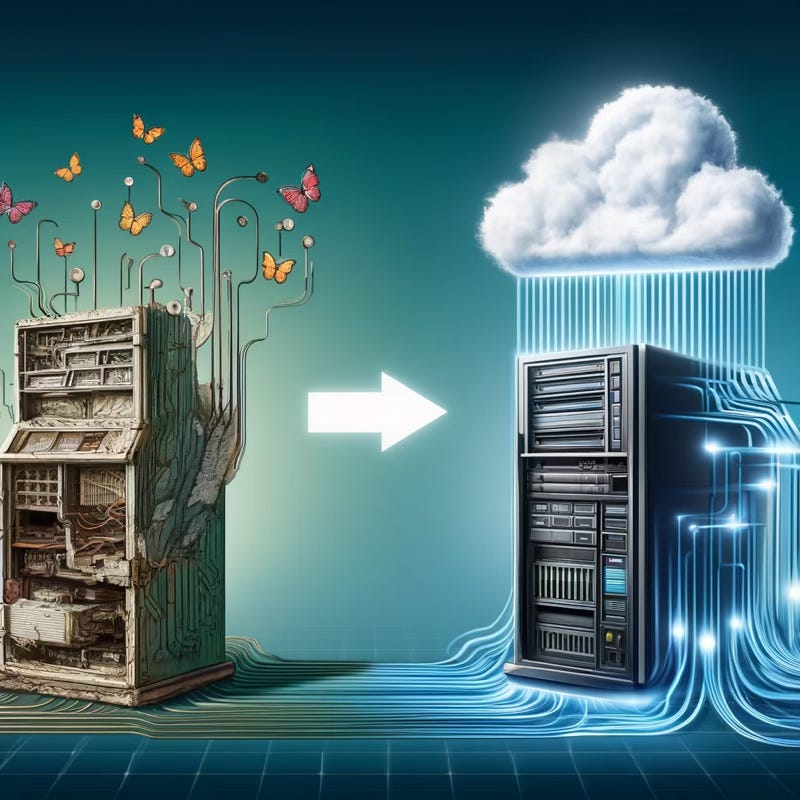Modernizing Applications
Transforming Legacy Systems for a Future-Ready Digital World
Modernizing an application is like renovating an old house—you don’t just tear everything down. Instead, you figure out what’s worth keeping, what needs updating, and how to make it future-proof. Here are a few considerations to keep in mind before embarking upon the journey of modernization.
1. Understand What You’re Working With
Take a deep dive into the current system. What works? What’s broken? What’s making life harder for users and developers?
> Example: If your app is running on an old WebLogic server with outdated dependencies, identify what’s causing performance bottlenecks before jumping into a full rewrite.
2. Define the “Why” Behind the Modernization
Are you doing this for performance (faster response times), scalability (handle more users), security (reduce risks), or cost savings (move to the cloud)?
> Example: If your app struggles to handle traffic spikes, breaking it into microservices and deploying it on Kubernetes could be a solid move.
3. Choose the Right Strategy—It’s Not Always a Full Rewrite
Rehosting: Move to the cloud without major changes (quickest way).
Replatforming: Move and tweak things to fit a better infrastructure.
Refactoring: Clean up the codebase and improve how things work under the hood.
Rebuilding: Start from scratch with modern frameworks.
Replacing: Sometimes, it’s smarter to switch to an existing SaaS product instead of maintaining a custom one.
> Example: If your legacy monolithic app takes forever to deploy, refactoring it into containerized microservices (Docker + Kubernetes) can speed things up.
4. Make It Cloud & DevOps Ready
Automate deployments using CI/CD pipelines (Jenkins, GitHub Actions).
Use containerization (Docker, Kubernetes) for easy scaling.
Implement Infrastructure as Code (Terraform, Ansible) for consistent setup.
Monitor everything using Prometheus + Grafana to catch issues before they explode.
5. Security and Compliance Are Non-Negotiable
Implement role-based access controls (RBAC) to keep things locked down.
Encrypt sensitive data and ensure compliance with GDPR, HIPAA, etc.
Regular security audits can save you from nasty surprises later.
> Example: If you’re storing customer data, ensure encryption at rest (AES-256) and in transit (TLS 1.2+).
6. Focus on Performance & Scalability
Shift from SQL to NoSQL (MongoDB, DynamoDB) if your app struggles with large-scale reads/writes.
Implement caching (Redis, CDN) to reduce server load.
Use message queues (Kafka, RabbitMQ) to handle high traffic efficiently.
> Example: If your app struggles under peak loads, implementing rate-limiting and caching can drastically cut down server stress.
7. Improve the User Experience
Nobody likes slow, clunky apps. Modernize the UI with React, Vue, or Angular.
Optimize APIs for speed—use GraphQL if REST endpoints are sluggish.
Make the app mobile-friendly because most users expect it.
> Example: If your dashboard takes forever to load, lazy-loading components and optimizing API calls can make a huge difference.
8. Roll It Out in Phases, Not All at Once
Start small. Pick a non-critical feature and modernize that first.
Test everything like crazy before rolling it out company-wide.
Use feature flags so you can turn off new changes if things go south.
> Example: Instead of overhauling the entire app, start with one microservice (say, user authentication) and deploy it separately.
Modernization isn’t about chasing trends—it’s about making sure your app stays reliable, fast, and easy to maintain for years to come. Pick the approach that makes the most sense for your use case, and don’t forget to involve the dev team, business stakeholders, and end users in the process.



